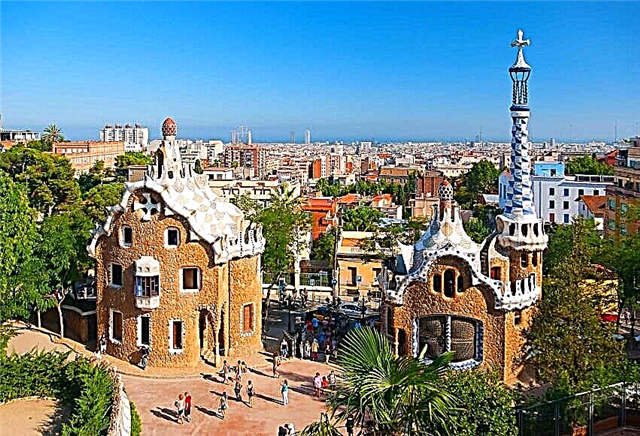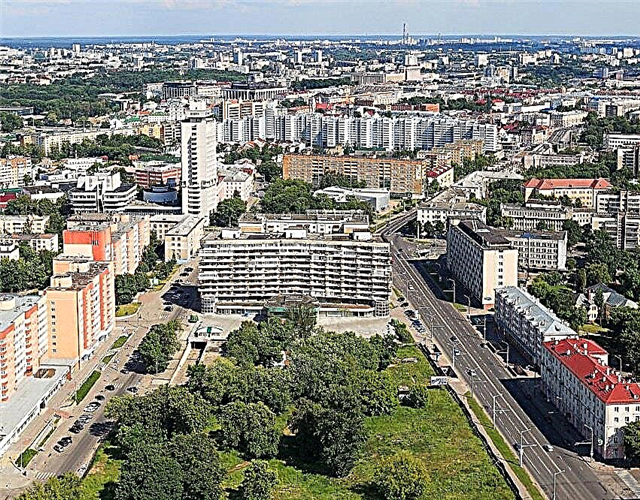The Temple of Heaven, built in Beijing, attracts attention every year with its rounded shape, since it is the only structure of its kind in the capital of the People's Republic of China. Initially, it was assumed that the building would be dedicated to two elements: heaven and earth, but after the construction of a separate temple, the first was named in honor of the air element because of its symbolic form.
History of the Temple of Heaven
In 1403, when the imperial residence was moved from Nanjing to Beijing, Zhu Di decided on a large-scale construction in the new center of the Middle Kingdom. The status of the city was the beginning of the construction of numerous buildings of bizarre shape to improve the territory and maintain important traditions for the country. It was then that the plan for the Temple of Heaven and Earth appeared, in which they subsequently began to conduct prayers for the prosperity of the Chinese state.
The construction of Tiantan was completed in 1420. Then it was still dedicated to both elements and only 110 years later received its current name. By this period, the original appearance of the temple was changed, as the Altar of Heaven and the Hall of the Imperial Heaven were added. At the same time, pictures appeared with the names of the rulers of China, as well as the amazing Wall of Whispers. The unusual design reflects any sounds, including whispering, and increases their volume.
In 1752, Tsanlong ordered changes to the Imperial Firmament Hall, bringing it to its current form. The Harvest Prayer Hall was severely damaged in 1889 by a fire that broke out. This part of the temple was struck by lightning, which is why the significant hall was closed for several years until it was fully restored.
In 1860, the Temple of Heaven was captured by enemy troops during the Opium War. In 1900, the building became the command center for the eight states that invaded Beijing. All these events brought only destruction and decay to a place famous throughout the country, as a result of which it took years to completely restore the building to its original appearance.
President Yuan Shikai tried to revive the prayers in the temple in 1914, and four years later it was decided to turn the building into a public place. In 1988, Tiantan was included in the World Heritage List.
Traditional rite for a good harvest
In China, it was always believed that the emperor had divine roots, so only he could appeal to the gods with requests for the prosperity of the state. For the country, the harvest has always been of great and even paramount importance, therefore, twice a year, the ruler went to the Temple of Heaven and raised his hands up so that natural phenomena would go on as usual, and natural disasters would not touch the Chinese land.
For the ceremony to be carried out correctly, the emperor had to fast for several days, excluding meat from the diet. He went to church in special, painted clothes and performed first cleansing, and then the prayer itself. According to the rules, the inhabitants of the country could not watch the procession of the ruler to the temple to perform the ceremony, and also be present inside the sanctuary. During the ceremony, everyone was waiting for natural signs and symbols, which they took for the answer of the gods to the emperor's requests, predicting a good or bad harvest.
Peking temple architecture
As mentioned earlier, Tiantan is shaped like a circle, symbolizing the sky. The entire complex with adjoining gardens is spread over an area with a total area of about 3 sq. km. You can enter here through any of the four gates located in the directions of the light. Significant and interesting buildings of the temple are the Hall of Prayer for the Harvest and the Imperial Firmament, as well as the Altar of Heaven.
These rooms are connected by the Danbi Bridge, its length is 360 meters and width is 30. This tunnel is a symbol of the ascent from earth to heaven, which plays an important role in the traditional perception of signs. In addition, tourists often visit the Seven Heavenly Stones, the Long Corridor, the Gazebo of Longevity, the Temple of Abstinence, an orchard and a rose garden. Photos from these places are picturesque, so many people spend time on the territory of the sacred place every day.
Useful information for tourists
Guests of Beijing are interested in where the Temple of Heaven is located and how to get to it. You can get there either by metro or by bus, while a large number of routes will be delivered to one or another gate. Most of the excursions start in the western part.
We advise you to look at the Church of the Holy Sepulcher.
You can visit the territory on any day, opening hours: from 8.00 to 18.00. Many are interested in how to get to the Beijing temple for free, but this cannot be done. The entrance price is not high; in the off-season it is significantly reduced. Locals prefer to spend their leisure time here, so they can be found here resting in parks, doing yoga, playing cards.









